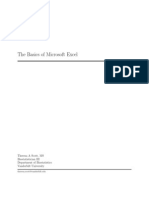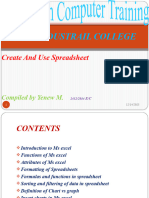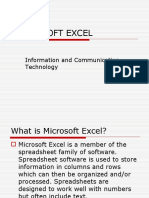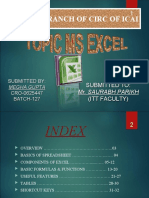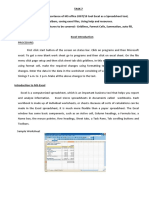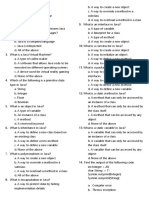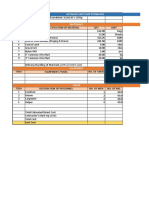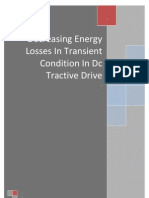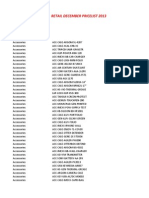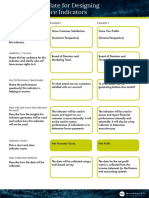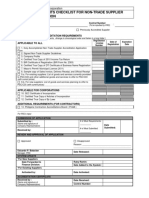0% found this document useful (0 votes)
78 views3 pagesMs Excel Teaching Notes
The document provides an introduction to Microsoft Excel, covering its purpose, interface, data entry, formatting, formulas, functions, and chart creation. It includes practical tips for teaching beginners, emphasizing the importance of starting with basic concepts and using real-life examples. Additionally, it lists useful keyboard shortcuts to enhance productivity.
Uploaded by
hustlesa00Copyright
© © All Rights Reserved
We take content rights seriously. If you suspect this is your content, claim it here.
Available Formats
Download as PDF, TXT or read online on Scribd
0% found this document useful (0 votes)
78 views3 pagesMs Excel Teaching Notes
The document provides an introduction to Microsoft Excel, covering its purpose, interface, data entry, formatting, formulas, functions, and chart creation. It includes practical tips for teaching beginners, emphasizing the importance of starting with basic concepts and using real-life examples. Additionally, it lists useful keyboard shortcuts to enhance productivity.
Uploaded by
hustlesa00Copyright
© © All Rights Reserved
We take content rights seriously. If you suspect this is your content, claim it here.
Available Formats
Download as PDF, TXT or read online on Scribd
/ 3











